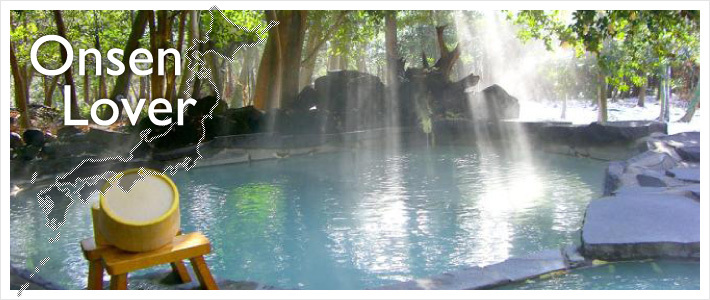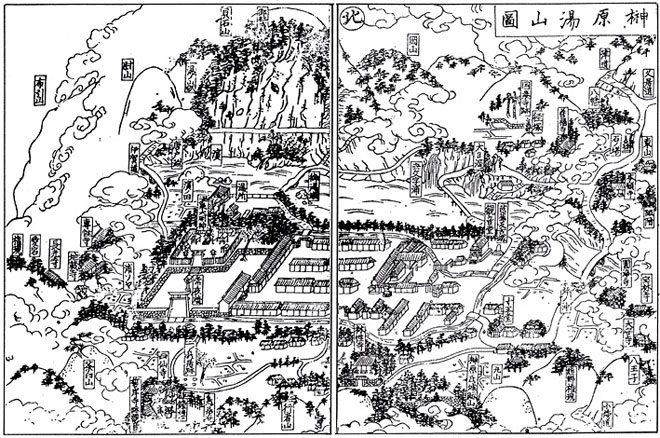The Onsen Professor, Visitor to Over 4700 Hot Springs, Explains Three Reasons They are Good for Your Body!

The Onsen Professor, Visitor to Over 4700 Hot Springs, Explains Three Reasons They are Good for Your Body!

Relationship between Japanese and Hot Springs Traces Back Thousands of Years, to Current Communal Use Developed in 19th Century.
Japan, one of the world's few volcanic countries, is well known for its excellent hot springs. The Japanese have been benefitting from hot springs for generations. The relationship between the Japanese and hot springs is ancient indeed, tracing back nearly 6,000 years to the Jomon Period.
It's well known that Japan's military commanders, including Takeda Shingen, Toyotomi Hideyoshi, and Tokugawa Ieyasu, used hot springs to recover from injuries and illnesses. Later on, in the Edo Period that spanned from the 17th to 19th centuries, hot spring treatments gained widespread use among the common people of Japan as a form of curative and preventative care for a variety of ailments.
Most hot springs form due to rainwater. As water seeps underground, it accumulates at a depth of several thousand meters at the bedrock stratum. Below this bedrock exists extremely hot pockets of accumulated magma, ranging in temperatures between 600°C and 1,300°C, which heat the water. The bedrock stratum also contains various minerals and gases, which become part of the composition of the hot spring water. Finally, the heated water loses density and reverses direction, flowing back up to the surface, where it finally comes gushing out.
These days, Japan has over 3,000 hot springs, each with its own quality of spring water, lending each one its own "personality." Common assumptions are that hot spring waters differ merely in the presence of substances like sulfur, calcium, or sodium, but in fact the compositions, quantities, and ratios differ for each hot spring.
I have never been hospitalized for even a day in my life for an illness or injury. When work gets hectic and wears me down, I recover by taking a dip in a hot spring. For me, even issues like a slipped disc, gout, or ureter stones, ailments which would normally require medical attention, have been cured using hot springs.
In the past, I coined the term "gensen kakenagashi," or "pure, free-flowing spring water," and I have devoted myself to spreading its use. Now, it has become a popular term, and gensen kakenagashi is an especially important point for me when selecting a quality hot spring.
An onsen must meet the following conditions to meet my definition of gensen kakenagashi:
- ● New water continually pours into the bathtub.
- ● The poured water overflows to the outside of the bathtub.
- ● The overflowing water does not filter back into the bathtub.
- ● Water is not recirculated within the bathtub to make up for a lack of hot spring water.
I think many people who are fighting illnesses or who have delicate constitutions are very concerned about the "freshness" of their food products and drinking water. This is because when food products and water are exposed to air (oxygen) they begin to oxidize and deteriorate in quality.
In the same way, hot spring water oxidizes when exposed to air. Hot spring water has no contact with air deep underground, at the bedrock stratum. Its oxidation begins as it gets closer to the surface, and it begins to come in contact with air. This is known as the hot spring aging phenomenon. Oxidized hot spring water loses its effectiveness, and a good hot spring needs fresh, non-oxidized water to be effective.
Keeping pace with the hot spring boom of recent years, many kinds of hot spring facilities have popped up throughout the country. Among them are many "imitation" hot springs, with circulation systems which reuse the spring's water again and again. If you go to a hot spring with the hopes of curative bathing, please go to a "genuine" gensen kakenagashi hot spring.
There are many reasons why hot springs have such positive effects. I will now describe three easy-to-understand reasons.
1. Hyperthermic Effect
The hyperthermic effect is the most well-known outcome of taking a hot spring bath. Submerge yourself up to your shoulders in a hot spring for five or six minutes and your face will start to sweat. This shows that your blood circulation is improving. Entering a hot spring improves the circulation of your blood and lymphatic fluid, and your blood and bodily fluids begin to flow more easily to all parts of your body. As a result, your body expels its waste and becomes clean.
Warming up your body in a hot spring increases your levels of HSPs (Heat Shock Proteins). HSPs are a type of protein that repair cells throughout the body, and which have increasingly become the subject of research in recent years. The existence of HSPs explains the origins of the idea that "heating up your body is good for it." Higher levels of HSPs have been shown to strengthen the body's immune system.
HSP levels also increase when one bathes at home, but one's body cools quickly after exiting a household bath. Not only does a hot spring heat the body quickly, this hypothermic effect is maintained longer after exiting the bath, which also preserves the effects of HSP, and therefore the repair of cells. Hot spring bathing is the most efficient way to increase HSP levels.
Latest Research Reveals Hidden Reduction Power of Hot Springs Leads to a Healthy Body.
2. Reduction (Antioxidation) Effect
In addition to hyperthermic effect, I have focused on the fact that hot springs possess incredible reduction (antioxidation) action. Past research on hot springs have stated that "composition is king" - that the quality of a hot spring can be assessed by studying the amount of minerals and sodium in its water.
However, many "pure hot springs" can be found in Japan which, despite having extremely low levels of mineral compositions, nevertheless have long histories as curative springs. Hot springs such as Tawarayama Onsen in Yamaguchi Prefecture are incredibly effective against rheumatism and joint and nerve pain. This indicates that a hot spring's effects cannot be determined by its mineral and sodium content levels alone.
I, as an individual considered to be the foremost figure in hot spring research, have concluded through my research that "reduction power (antioxidative power)" is a deciding factor as to whether or not a hot spring will improve one's health.
Reactive oxygen (oxygen with strong oxidative effects) is a major factor in the aging of our bodies. Perhaps it would be easier to understand this if we replace the term "oxidation" with "rusting." Just as a nail rusts and grows brittle, so too does reactive oxygen convert fatty acids, an important part of our cellular membranes, into fatty acid peroxides, which cause cancer and lifestyle diseases, and otherwise throw our body into a state of stress.
The process of returning an oxidized state back to normal is called reduction. Our bodies contain antioxidants (enzymes) which return oxidized cells back to normal, and perform reduction within our bodies. Due to aging and eating habits, and other disruptions in the lifestyles of modern people, our reduction power gradually decreases, making us more susceptible to illnesses.
My research has found that excellent hot springs have exceedingly strong reductive properties. For instance, the aforementioned Tawarayama Onsen's water contains hydrogen. This, the tiniest element in all of creation, forms water when combined with oxygen. By providing an oxidized substance with hydrogen, water molecules are formed and the substance is rendered harmless. This illustrates that hydrogen provides an extraordinarily safe way to reduce reactive oxygen in the human body.
I have come to believe that the secret to these dramatic effects and the hot springs which provide them is hydrogen, which is not listed in the composition table of spring water under hot spring law. By investigating the effects of Tawarayama Onsen's waters in an actual experiment using test subjects, I found the surprising results that the water there increased blood flow in peripheral arteries by a factor of 2.3, while average blood flow increased by a factor of 3.8. Signs of improvements in lymphocyte and granulocyte white blood cell levels, as well as of macrophages, could also be seen. I also expect it can help with symptoms caused by blockages in blood flow, such as shivers, swelling, stiff shoulders, fatigue, dry skin, and issues like high blood pressure and pain.
Hydrogen is a molecule which disperses extremely quickly. In order to benefit from the reducing powers of hot springs, we must take advantage of gensen kakenagashi to maintain constantly fresh spring water.
Currently I am working in a collaborative effort with industrial, governmental, and academic groups to advance research on the reductive and antioxidative powers of hot springs. I am researching into other compounds in hot spring water beyond hydrogen, such as sulfides, to see if they might also have antioxidative effects. This research may well overturn the basic concepts of research on hot springs that existed up until now. The antioxidative effects of hot spring water have been shown to eliminate and suppress reactive oxygen, which is thought to be the "root of all diseases."
Hot Springs an Asset and Source of Pride for Japan - A Trump Card in "Preventative Medicine," Capable of Things Medicine Isn't.
3. Effects on the brain and autonomic nervous system
Our autonomic nervous system (which subconsciously controls our organs and blood vessels) is composed of our sympathetic nerves (which stimulate the heart and body) and our parasympathetic nerves (which relax our heart and body). All day long, these two systems maintain a balance like a see-saw, keeping us healthy.
I think many people who are in pain stemming from a variety of causes take medicines such as painkillers and steroids. Professor Emeritus Toru Abo of Niigata University, elucidating the relationship between our autonomic nervous systems and immune systems, points out, "daily medicinal intake overworks our sympathetic nervous system." Furthermore, most medicines actually create reactive oxygen within our bodies in order to repel bacteria and viruses.
I recommend hot springs to these daily medicine takers in particular. The reason we become sleepy when we take a hot spring bath is because it stimulates our parasympathetic nervous systems. Hot spring bathing slows down the movement of our sympathetic nerves, which is being overworked by pain and medicinal effects, thus balancing out our autonomic nervous system. As a result, the body's immunity and recovery capabilities are also increased.
The "good feeling" that comes with getting into a hot spring is very important. The instant we feel a pleasant sensation, the neurotransmitter serotonin is released within the brain. Serotonin regulates the activity of active neurotransmitters such as dopamine and noradrenaline, thus preserving our mental balance. Modern people, with so much stress in their life, can turn to hot springs in order to relax mentally.
In Japan's rapidly aging society, many are calling for an emphasis on preventative healthcare on a nationwide level to keep down medical care costs. For some time, I have expressed my views that "human happiness means human health," that "hot springs are a national resource which can be used in preventative medicine," and that "hot springs can do things which medicine cannot." My hope is for people to take greater advantage of hot springs, which have the power to boost our vitality both chemically and emotionally.










